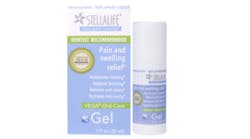New patent on synthetic molecules brings researchers closer to therapeutic approach for periodontal disease
University of Louisville researchers recently received a patent on a synthetic biochemical compound and its variants, moving science closer to a treatment for periodontal disease. This discovery could lead to the formulation of a mouth rinse or tooth varnish to prevent the periodontal pathogen, Porphyromonas gingivalis (P. gingivalis), from colonizing in the mouth and establishing itself orally.
Donald Demuth, PhD, associate dean for research and enterprise, UofL School of Dentistry, and Frederick Luzzio, PhD, professor, UofL College of Arts & Sciences, Department of Chemistry, developed and tested 40 different molecular compounds, and the three most potent compounds are being further developed.
ADDITIONAL READING |Getting your dental implant patient to say 'yes' to periodontal therapy
This patent builds on the previous work of Demuth and other UofL dental school researchers who developed a series of peptides, the building blocks of protein in a cell, that prevent interaction between P. gingivalis and Streptococcus gordonii (S. gordonii).
“When P. gingivalis enters the oral environment, it initially interacts with the bacterium S. gordonii—an otherwise benign organism—in order to lay the groundwork to propagate and ultimately gain a foothold below the gumline, leading to periodontal disease,” Demuth said.
ADDITIONAL READING | Enhancing periodontal regeneration with the use of biologics
Demuth found that administering the peptide in an animal model prevented P. gingivalis related bone loss—the clinical symptom of periodontal disease—and prevented the spread of the bacterium in the mouth. He says creating peptides is expensive, but synthetic compounds that mimic the active peptides are easier to formulate and less costly to produce on a large scale.
Luzzio and Demuth hope to improve the potency and stability of the three synthetic molecular structures, and eventually gain approval for a clinical trial.







